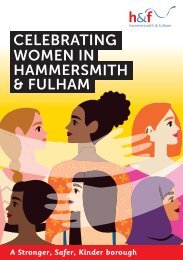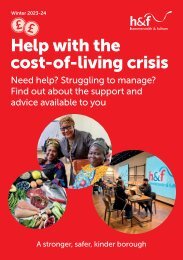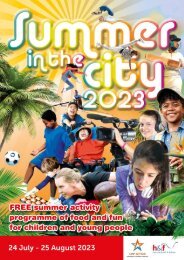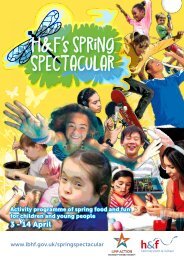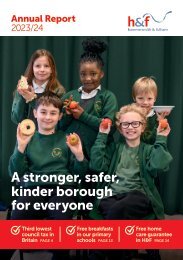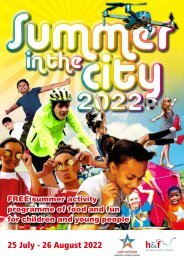H&F Climate Education Guide for Educators
“It is vital that the borough's children and young people are put at the heart of all efforts to deal with the climate and ecological emergency. It is their future that will be affected by decisions that are made today.” Paul Beaty-Pownall Climate and Ecological Emergency Commission Chair
“It is vital that the borough's children and young people are put at the heart of all efforts to deal with the climate and ecological emergency. It is their future that will be affected by decisions that are made today.”
Paul Beaty-Pownall
Climate and Ecological Emergency Commission Chair
You also want an ePaper? Increase the reach of your titles
YUMPU automatically turns print PDFs into web optimized ePapers that Google loves.
Schools Approach to
Climate Education
5
“Education is an essential element of the global response to climate
change. It helps young people understand and address the impact
of global heating, encourages changes in their attitudes and behaviour
and helps them adapt to climate change-related trends,” (UNESCO 1 ).
Its thrust is unequivocal; yet the knowledge, skills and
understanding associated with climate education are diverse.
__________________________________________________________
“Climate change currently appears in numerous elements of the school
curriculum.” A spokesperson from the Department of Education continues: “In
primary science and geography, pupils study topics that provide the underpinning
knowledge and understanding required to study climate science in secondary
school. The primary curriculum also involves looking at changes across the four
seasons, weather patterns, climate zones, vegetation belts, and the water cycle
2 .”_________________________________________________________
The connections between climate education and a range of subject areas
is also acknowledged. Just a cursory look at the primary school national
curriculum shows that aspects of climate change might also be included
in subjects such as Art, DT, and RE. With the focus that we have on reading
in primary schools, along with the development of children’s vocabulary,
it might be suggested that the selection of fiction and non-fiction books in
primary schools be reviewed to include a climate education content.
Climate education can also be developed with the youngest EYFS children,
as they understand the world through outdoor learning, growing, and
developing a respect for living things.






